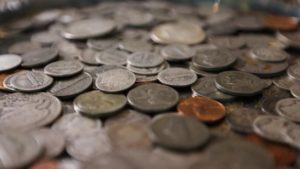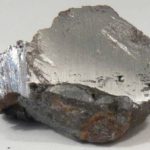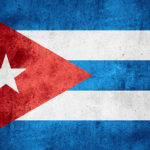37 interesting facts about money
 In different countries, money is very, very different. One thing unites them – people use them to buy and sell goods and services. In essence, this is a brief but capacious definition of the essence of money. But what only humanity has not used before, in the old days, before the invention of banknotes and coins!
In different countries, money is very, very different. One thing unites them – people use them to buy and sell goods and services. In essence, this is a brief but capacious definition of the essence of money. But what only humanity has not used before, in the old days, before the invention of banknotes and coins!
A million US dollars in $ 100 banknotes will weigh about 10 kilograms.
In the country of Palau in 2008, a limited series of collectible coins was issued. They contain a drop of water from a French source, which is considered sacred in Palau.
In the first quarter of the last century, in the years after the First World War, Germany was in economic collapse. The currency system was destroyed, the economy fell into disrepair, so residents in different cities, trying to maintain a semblance of order, printed their own money.
In Cote d’Ivoire, unique coins were once minted inlaid with pieces of bones of fossil mammoths.
In the world there is private money issued not by countries, but by various companies. In most countries, private money is either prohibited or severely restricted.
The banknote with the largest denomination in history was issued in Zimbabwe during the period of hyperinflation. One bill had a face value of 100 trillion Zimbabwean dollars.
The world’s first money transfer was made in the USA in 1918 by telegraph.
Not far from New York there is the city of Ithaca, in which local Ithaca money circulates on a par with the American dollar.
In the USSR, most of the money was not “hard currency”. Such belonged only to the Soviet gold pieces of gold.
After the First World War in Germany, money depreciated to such an extent that residents poured it over the walls instead of wallpaper – it was simply cheaper.
The word “penny” appeared in the era of the reign of Ivan the Terrible, since the image of the tsar with a spear in his hand was minted on silver coins.
Pablo Escobar, the Colombian drug lord and part-time richest man in the world, once burned millions of dollars in a fire to warm his family when they were all hiding from the authorities in the highlands.
The $ 100 banknote shows Franklin, who was never the president of the United States. Other dollar bills show the faces of the presidents.
The most expensive money is ancient Greek decadrachms. Archaeologists have managed to find them very few, so these coins are extremely expensive.
A penny was not always the smallest money. Once in the Russian Empire there were also half coins equal to one eighth of a penny.
Notches have been made at the edges of coins since the coins were still minted from precious metals. This idea was proposed by the famous scientist Isaac Newton in order to discourage scammers from cutting the edges of coins.
In Canada, once made the world’s most expensive coin of 999 gold, weighing 100 kg. Its face value was 100 thousand Canadian dollars.
Ancient Rome was the first state in which round coins began to be minted on an industrial scale.
In ancient Sparta, metal rods were used as money. The reason was simple – with such money it is inconvenient to steal, it is difficult to give a bribe, and in general they motivated less to strive for wealth.
The rarest American bill is a two-dollar bill. Only a limited edition was released.
There are thirty times more game money for Monopoly, a popular board game in the world, than real dollars.
The smaller the denomination of a banknote, the faster it wears out, since it is used more actively.
A century and a half ago, about a third of all US dollars in circulation were fakes.
The most popular items for money are dollar, peso and franc.
A banknote of 100 US dollars is the most common in the world.
According to American law, portraits of only already deceased people can be depicted on money.
The coin with the largest denomination was a coin of 100 thousand lire, which had once been circulated in Turkey.
The largest money in the world was stone coins used in Micronesia.
In the US, sometimes printed banknotes of 100 thousand dollars each, but they were used for internal calculations, so that they did not go into circulation.
An incredible amount of dirt accumulates on the money. They are dirtier than any other objects that we pick up.
On average, paper money, more precisely, individual banknotes, has time to go through the hands of 30-50 thousand people before they finally deteriorate.
The world’s first paper money appeared in the Chinese Empire about 3 thousand years ago.
In some countries, “paper” money is made from thin plastic. For example, in Malaysia and Vietnam.
American dollars are stronger than most other bills.
On average, a paper banknote lives 3-5 years until it becomes unusable.



























